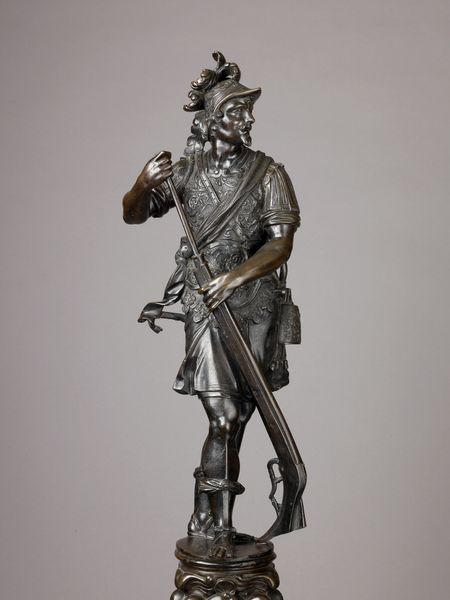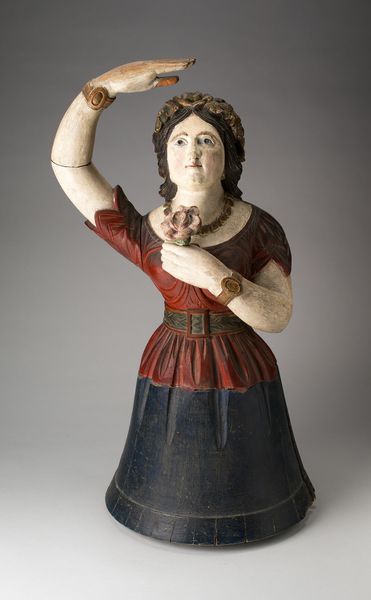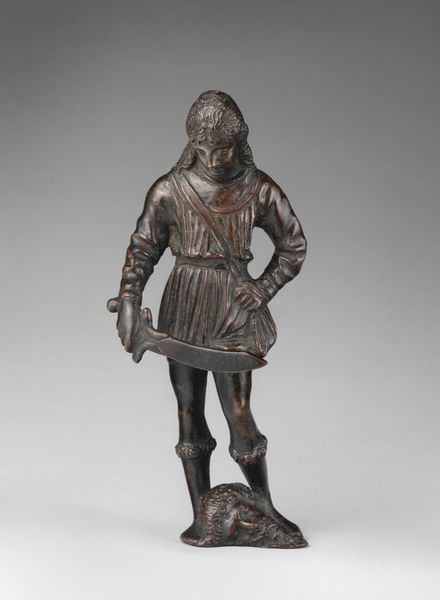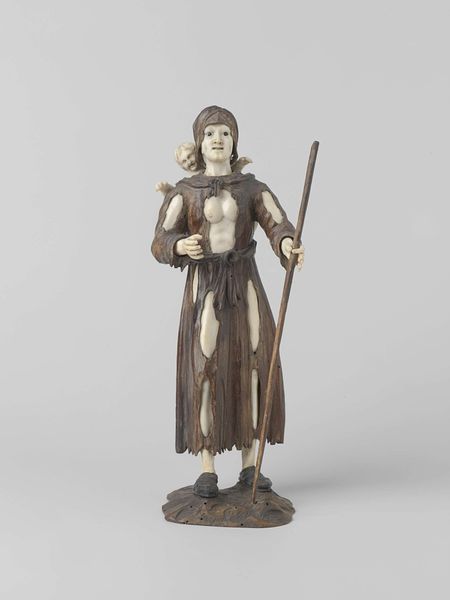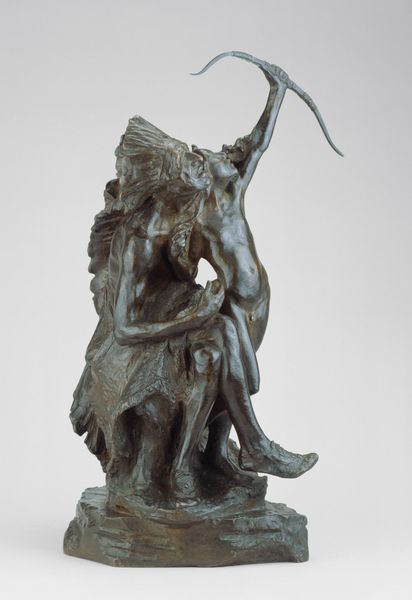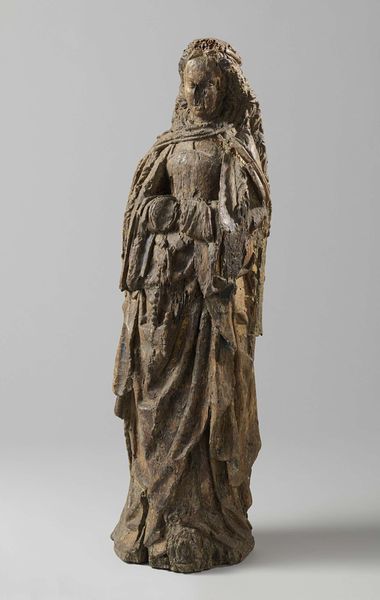
carving, sculpture, wood
#
medieval
#
carving
#
sculpture
#
figuration
#
sculpture
#
wood
#
history-painting
#
medieval-art
Dimensions: Overall: 53 3/8 x 16 1/8 x 13 3/4 in. (135.6 x 41 x 34.9 cm) Ht. without spear or base: 42 1/4 in. (107.3 cm) Base: 3 1/4 x 12 1/2 x 10 in. (8.3 x 31.8 x 25.4 cm)
Copyright: Public Domain
This sculpture of Saint George Slaying the Dragon was made by Michael Pacher around 1480, likely from limewood, with paint and gilding on top. The way Pacher has worked this material really dictates the appearance of the piece. You can see the softness of the wood in the gentle curves of Saint George’s face and hair. But he’s also used the wood’s capacity for sharp carving, especially in the armor. There’s real dynamism there, with gilded highlights catching the light. And note, the choice of wood wouldn't have been accidental; limewood was popular in this region because of its fine grain. What’s easy to overlook is the labor involved. Not just the carving and painting, but the gilding. Applying gold leaf is painstaking work. This hints at the social context; Pacher was a highly sought-after artist, whose sculptures were prized commissions. When we consider the material, the making, and the context all together, we get a far richer understanding of the object. It invites us to look beyond the figure of Saint George, and think about the world that made him possible.
Comments
No comments
Be the first to comment and join the conversation on the ultimate creative platform.

